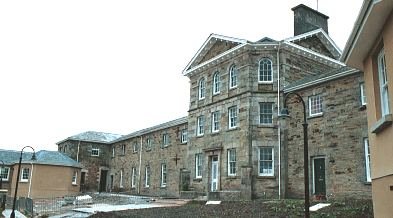Workhouse, St Columb
Moffatt felt that with the numerous unions being formed in the West Country, he could use his contacts in that area to expand the work of the office. However, he told Sir George Gilbert Scott that he felt that ‘his youthful appearance’, (in fact he was only a year younger than Scott), was a hindrance to getting work and suggested that if he could say that ‘he had a partner already in practice whose name he could use to back him’, this problem might be resolved. They therefore agreed to form a partnership to procure and build workhouses in the west, with each partner keeping other work that they had obtained to themselves. According to Scott:
The effect of Moffatts new arrangement was magical! He followed up Union hunting into Devonshire & Cornwall with almost uniform success and my poor little quartette of works round my old home soon became as nothing when compared with the engagements which flowed in upon us as partners. Moffatt's own exertions were almost superhuman, & when I recollect that no railways came to his help I feel perfectly amazed to think what he effected!
Scott realised that Kempthorne's model arrangements were not sacrosanct and that a better design could be acceptable to the Commissioners and the local Guardians. The partners were on a relentless treadmill. Between the years 1835 and 1841, Scott, or Moffatt, or Scott and Moffatt as a partnership, built about forty workhouses in different parts of England, with the main groups in Devon, Cornwall, Somerset and Wiltshire, with smaller groups, presumably the Scott areas, in Staffordshire, Lincolnshire and Essex. Moffatt's area to the south-west was, however, the main source of work for the practice.Both St Columb (1838-9) and Truro Workhouses (1849) were by Moffatt working by himself, using the standard Scott and Moffatt plan.
Scott’s Recollections, I 277-9, 281-2.

